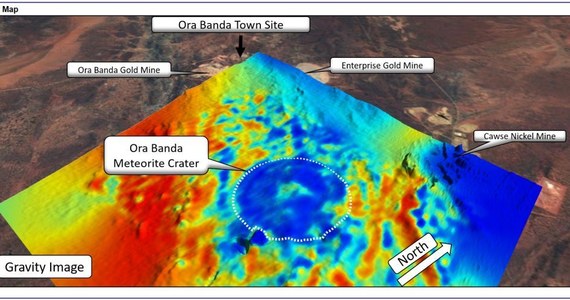Gold prospectors accidentally discovered a crater 100 million years old. The meteorite that caused it might have been the size of two soccer fields.
Ora Banda Impact Crater
/press materials
Gold prospectors in Australia’s Outback recently discovered a giant impact crater formed about 100 million years ago when dinosaurs roamed the Earth.
Found near the town of Ora Banda, the crater simply called the Ora Banda Impact Crater is about 5 km in diameter. This giant hole was probably created by a meteorite 200 m in diameter, about the length of two football fields.
Geologists at Evolution Mining, an Australian gold mining company, stumbled upon unusual rock cores at Ora Banda. A team of scientists led by Jayson Meyers, a geophysicist and founder of Resource Potentials, immediately spotted collision cones – structures that spoke of a meteorite impact.
Collision cones are geological structures formed in rocks as a result of rapid stress propagation, a near Rayleigh wave, when the pressure in the rock is between 2 and 30 GPa. The shock waves smash rocks into a unique crash cone shape – similar to what a hard object leaves on a car windshield.
“Since we know that no nuclear tests have been carried out at Ora Banda, the evidence shows that the crater was formed by a meteorite impact,” Meyers said.
Now researchers at Curtin University in Perth are studying the Ora Banda site at a microscopic level. In particular, scientists will check whether the minerals at this point have been evaporated and then recrystallized under high pressure. The energy released on a meteorite impact would be greater than the combined energy of any nuclear test ever performed.
Research on zirconias and other minerals will most likely reveal when the meteorite hit took place. It is now believed to have happened between 250 and 40 ml years ago.
–


